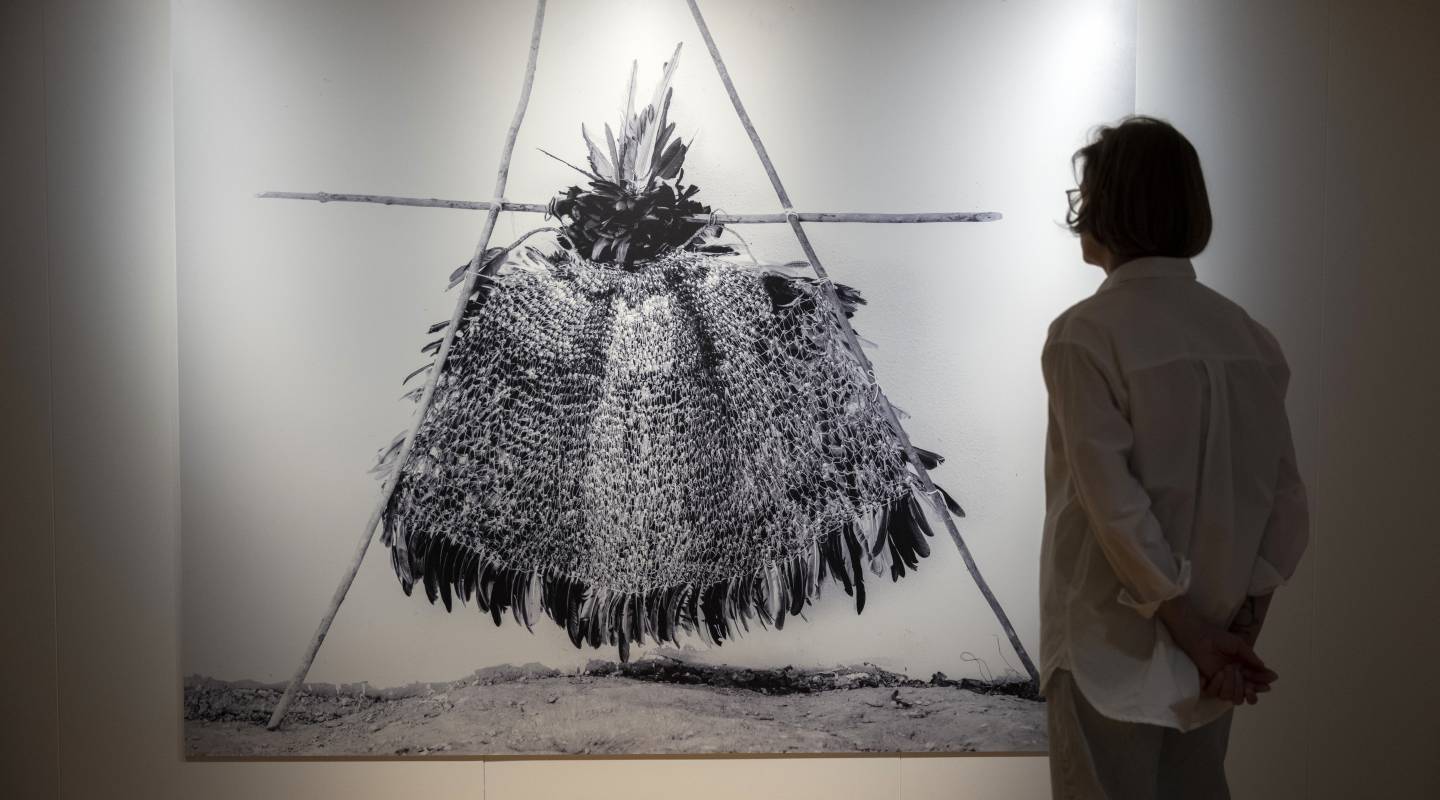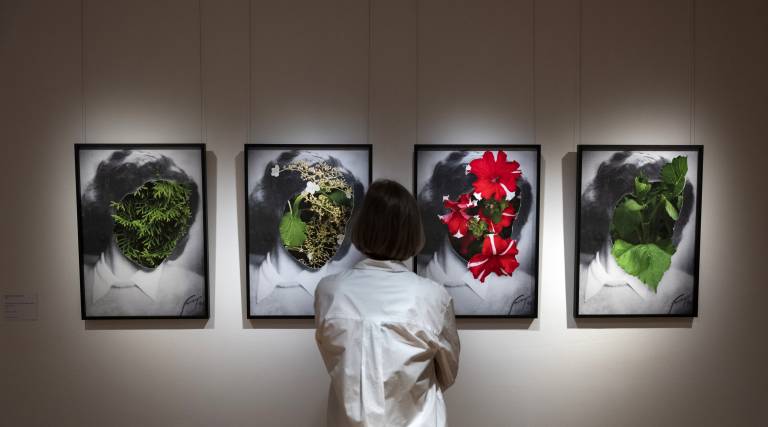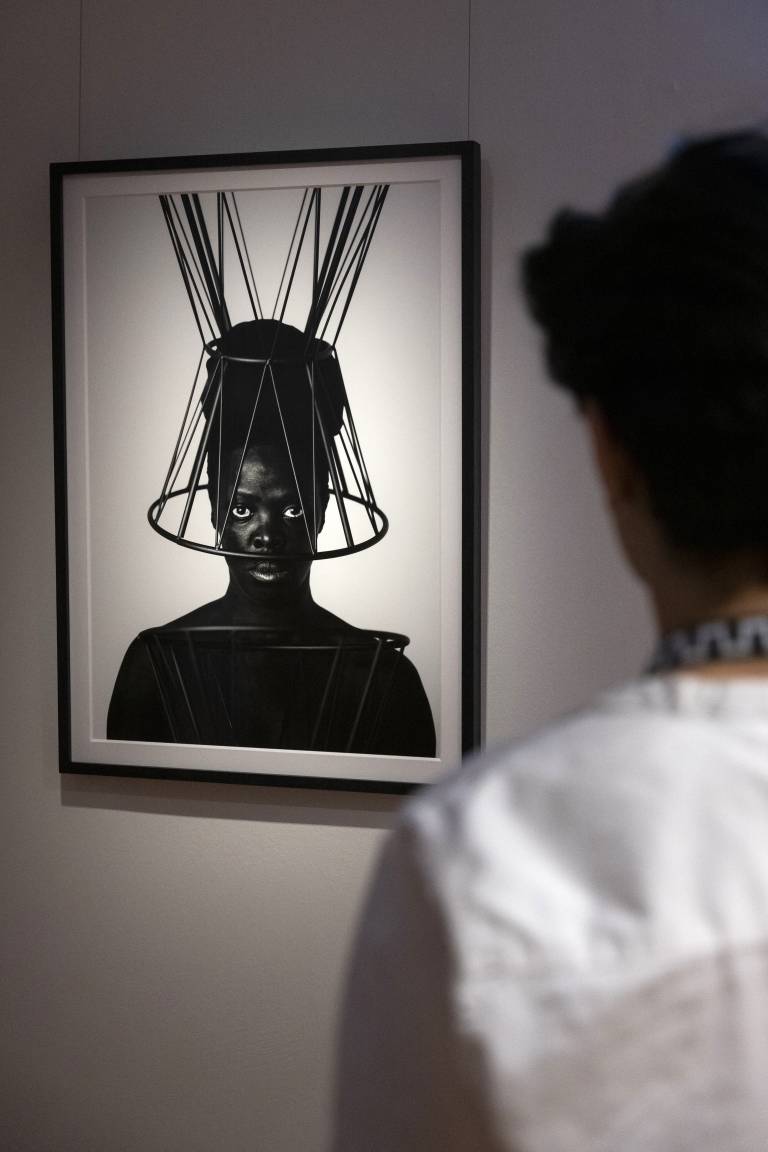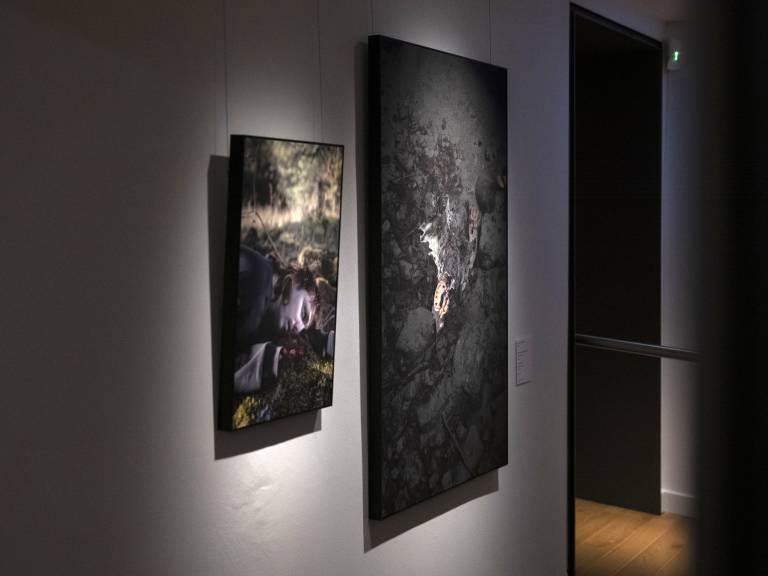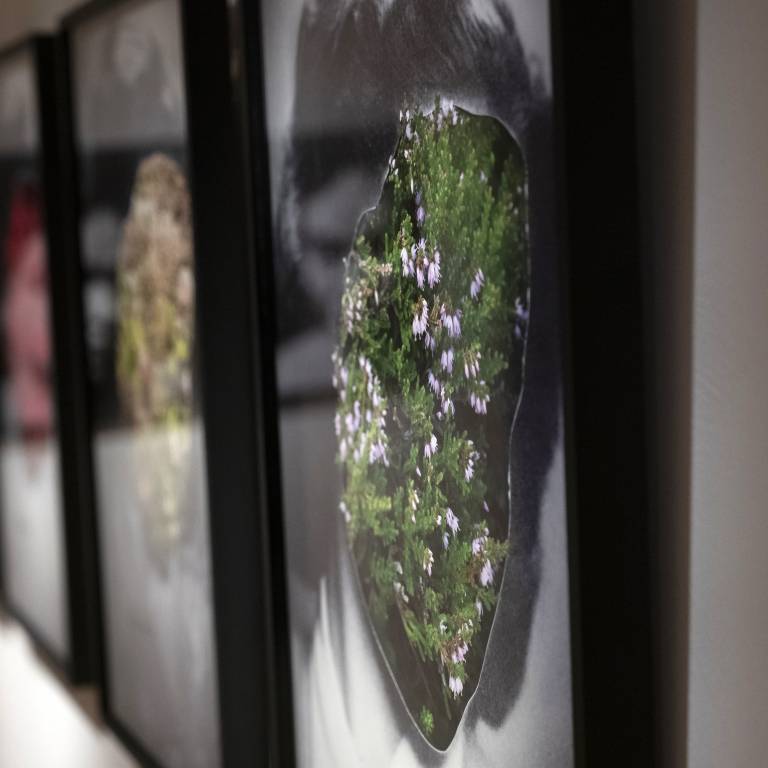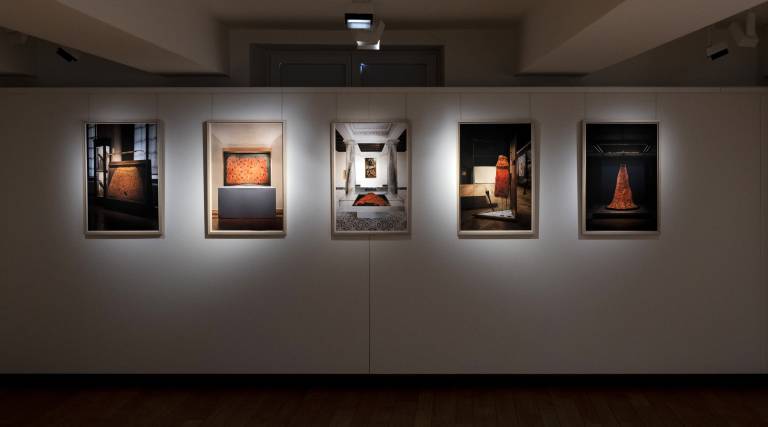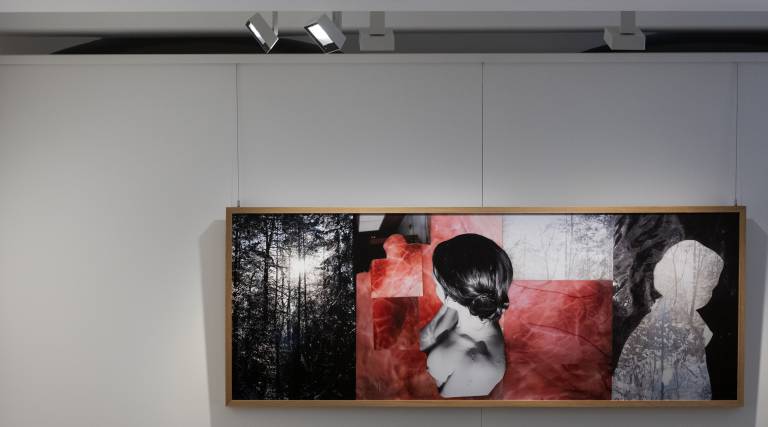It is only fitting that photography is leveraged to express and complicate our understanding of who we are in the show Je est un autre, staged as part of the European Month of Photography (EMOP) at the Nationalmusée um Fëschmaart.
Here, we see eight different artists navigate the murky waters of identity, the self and the other in response to this year’s prompt Rethinking Identity. Walking through the exhibition, we glimpse fragmented visions of the self – a reflected face here, a jumble of individual features there – that investigate the borders and edges of identity by photographic means. Whether they’re obscuring faces or distorting them, the artists deftly manipulate their visual material to make statements about the ways we see ourselves and each other.
Video clip by Éric Chenal at the entrance of the exhibition
Racial and gendered identities
A number of works on display consider identity through the prism of race and gender. Frida Orupabo’s striking collages, for instance, superimpose one face onto another, drawing on archival material to comment on colonial violence and gender stereotypes. In the work Turning (2021), a white woman is portrayed suggestively from behind, yet her face, which is turned at an impossible angle, is that of a person of colour staring impassively at the viewer. This exposes the voyeurism of the pose and makes the spectator complicit in the act of objectifying the female body.
Another artist who makes use of collage in her work is Lunga Ntila, the self-taught South African artist who tragically passed away last year at the age of 27. Using a distinctive cut-and-paste aesthetic, her compositions address the dual themes of identity and displacement. Her self-portrait Define Beauty III (2019) multiplies features and questions conventional beauty standards, drawing both on African culture and Cubist traditions.
Zanele Muholi also turns the camera on themselves in two gripping high contrast prints on display in the show, exaggerating the darkness of their skin tone as a way of reclaiming their blackness. Drawing on the power of the unexpected, they frame themselves with unconventional objects, as in Labo I, Torino (Italy) (2019), where they sport a large folded blanket as a headdress. Known for documenting the queer experience in South Africa, the artist is both a photographer and a visual activist.
Over in Luxembourg, Bruno Oliveira is also committed to shedding light on his home country’s growing queer community in his series In Ore Gloria (2021). Here, the artist investigates gendered identities and challenges heteronormative values in edgy colour prints that range from the lyrical to the theatrical, one of which is featured on the cover of the MuseoMag. In the exhibition, the fantastical soundscape A Trip to Neverland (2020) further heightens the sense of the surreal conveyed by Oliveira’s photographs.
Immersion in the fantastical soundscape A Trip to Neverland (2020)
Faceless subjects
Other artists in the show obscure the faces of their subjects in different ways to comment on the multifaceted nature of identity. Katinka Goldberg, for example, makes use of an iterative process to examine the portrait genre, swapping features for flowers and plants in a series entitled The portraits of my grandmother Assne (2020). By replacing her grandmother’s face with a variety of different motifs, the artist creates distance between the viewer and the subject, emphasising the unbridgeable gap between two very different lived realities.
Luxembourg-based artist Krystyna Dul may show her face in her series Mamas & Papas (2022), but it is digitally modified with features that are not her own, her eyes, nose and mouth varying from one image to the next. When does a self-portrait become a portrait of someone else, she asks here? The series’ title refers to the fact that Dul’s daughter recognises her mother in these pictures. Subverting the traditions of the portrait genre in a different way, Corina Gertz photographs her subjects from the back in her series Averted Portrait. Her works focus on clothing traditions and document diversity through forms of dress rather than facial features.
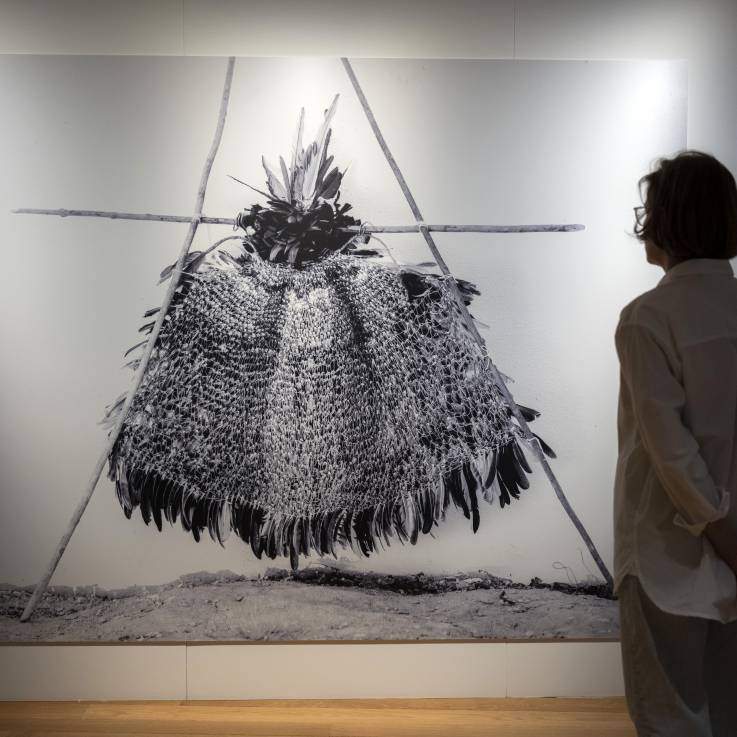
Livia Melzi, Sans titre verso, 2022
Sharing Gertz’s interest in dress as a marker of identity, Lívia Melzi’s prints focus on a collection of cloaks belonging to the Tupinambá tribe which were used in anthropophagic rituals and were removed from Brazil during the first centuries of the country’s colonisation. Blending sociological and artistic research, Melzi studies the reception of these sacred garments in Europe and their presentation in Western museums. Indeed, the way these institutions choose to display the cloaks says as much about their own belief system as it does about the objects themselves. Melzi’s photographs show the disembodied garments on display in various settings, underlining the importance of context in the meaning-making process.
When seen as a whole, the disparate and diverging perspectives of this year’s EMOP show demonstrate the fluid nature of identity, expand the notion of selfhood and challenge the genre of the (self-) portrait, opening up further avenues of investigation and study for years to come.
Text: Katja Taylor - Images and videos: Eric Chenal
Source: MuseoMag N°III 2023
Je est un autre is on view at the Nationalmusée um Fëschmaart until the 22 October 2023. Admission is 7 €.
